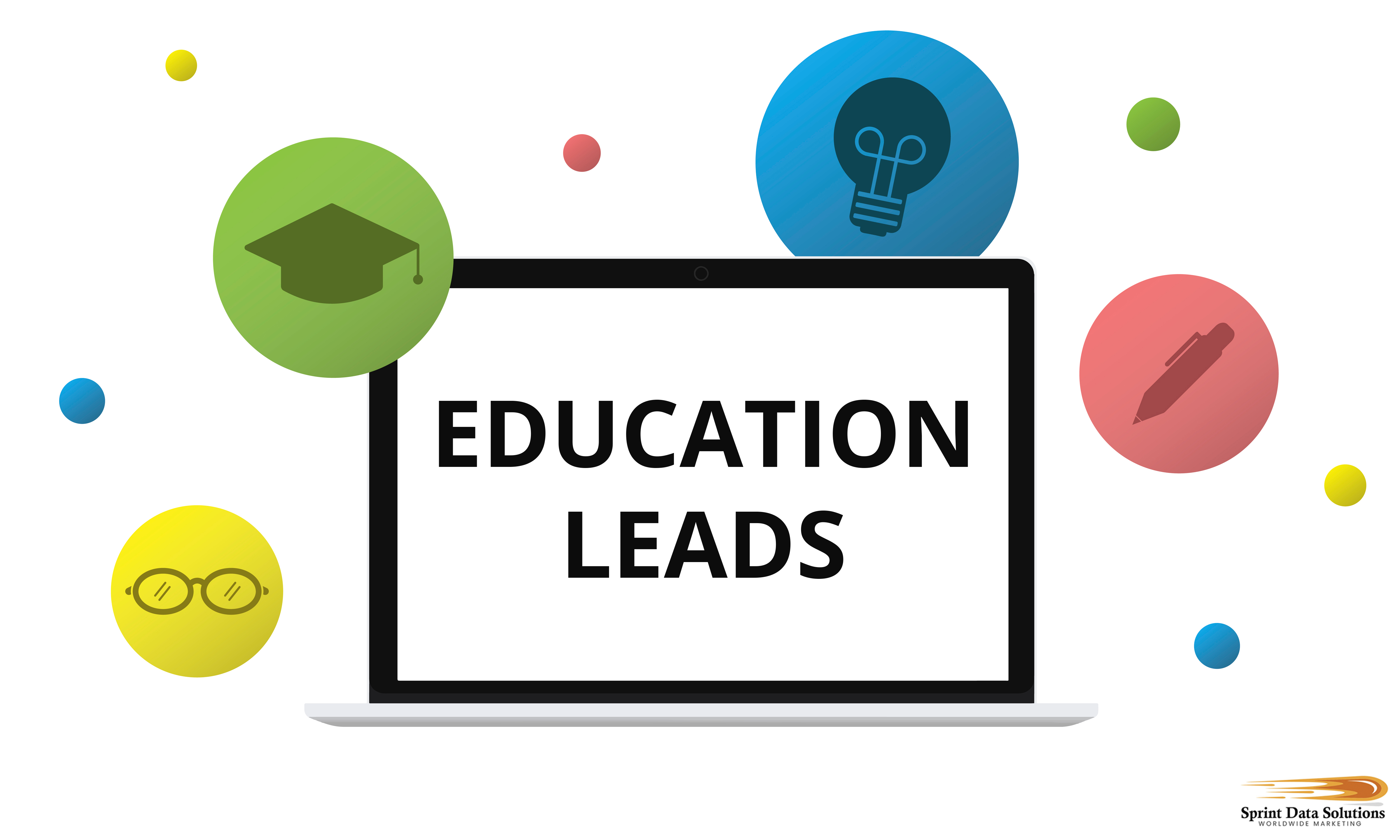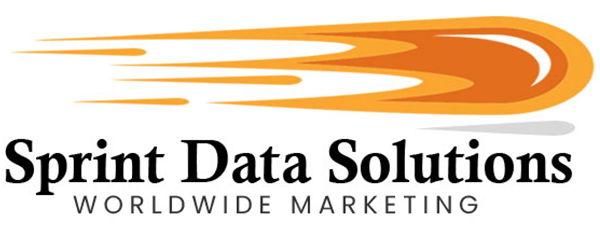Students Are A Growing Marketing Demographic If You Can Reach Them
Although younger children may often grumble about school, education remains one of the most vital cornerstones of any developed and forward-thinking society. At its core, education is about the transmission of knowledge, culture, skills, and wisdom from one generation to the next. It ensures that the collective advancements of humanity—scientific, technological, medical, and cultural—are not lost but continuously built upon. Without structured learning systems, there would be no medical breakthroughs, no technological innovations like the internet or smartphones, and no architectural feats beyond the most primitive shelters. It is through education that societies preserve their achievements and equip future generations to address challenges, solve problems, and create new opportunities.
But education is not without its challenges. While children may often see school as a distraction from play and leisure, adults and working professionals know that education is one of the most reliable paths to personal growth, career advancement, and economic stability. Formal learning provides the theoretical foundation, while technical and vocational training ensures practical application. A person educated in medicine becomes an essential part of the healthcare system. An individual trained in construction, IT, electrical work, or plumbing plays a crucial role in building and maintaining the infrastructure that supports daily life.
Moreover, in today’s rapidly evolving global economy, access to quality education is more important than ever. The rise of artificial intelligence, automation, and digital economies means that knowledge and adaptability are key assets. Lifelong learning has become a necessity, not a luxury. From early childhood education to college degrees and professional certifications, every stage of learning contributes to the intellectual capital of a nation. Informed, educated citizens are better equipped to participate in democracy, understand complex issues, and drive innovation.

The Challenges
The education system in the United States is currently undergoing a period of transformation, creating new complexities for today’s generation of students. For decades, the narrative was relatively clear: academic success culminated in earning a four-year college degree, which was widely seen as the most secure path to stable employment and upward mobility. A degree was synonymous with opportunity, and for many, it was considered the ultimate measure of educational and career achievement. While a college education still holds significant value—especially for professions like law, medicine, or academia—societal and economic shifts have changed the conversation.
Today, the job market is placing increasing emphasis on skilled trades and technical expertise that do not require a traditional four-year degree. Fields like plumbing, construction management, electrical work, automotive repair, cybersecurity, digital media, and software development are in high demand. In many cases, professionals in these fields are earning competitive salaries comparable to—if not exceeding—those of their college-educated peers, often without the burden of substantial student debt. As industries become more reliant on technology and infrastructure, the value of vocational education, apprenticeships, and certifications is gaining recognition and respect.
At the same time, however, financial accessibility to education—particularly post-secondary education—has become a growing concern. This generation of students faces an economic reality unlike that of their parents or grandparents. Whereas members of the Baby Boomer generation might have been able to fund their college education with part-time work and modest family support, tuition costs have risen dramatically over the past several decades. What was once a manageable annual expense is now often the equivalent of a mortgage, with the total cost of a four-year degree at many private institutions reaching into six figures.
The result is that student loans are no longer seen as a financial bridge, but as an unavoidable burden—often extending well into a graduate’s 30s or 40s. For many, student debt has delayed homeownership, marriage, family planning, and even retirement savings. Meanwhile, the perceived value of a degree is being scrutinized more than ever, with students and parents weighing the return on investment against alternative pathways such as trade schools, bootcamps, and entrepreneurial ventures.
The educational landscape of today is vastly different from what previous generations experienced. Navigating it now requires more strategic planning, financial foresight, and an openness to nontraditional paths. What remains constant, however, is the need for lifelong learning and adaptability—qualities that will define success in an ever-evolving global economy. As society continues to grapple with the balance between academic prestige and practical application, the future of education in America will be shaped not just by institutions, but by how well they meet the real-world needs of their students.
The Marketing Opportunities
As challenging as today’s educational environment may be for young Americans, one constant remains: this period represents a critical turning point toward independence. Even during the later stages of high school, many students begin to exercise greater autonomy—especially those with part-time jobs or substantial allowances. These teens are increasingly making their own purchasing decisions, engaging with brands directly, and exploring services that meet their personal needs, rather than relying solely on parental choices.
However, it is at the post-secondary level—college, university, or trade school—where this independence becomes fully realized. For many young adults, this is their first encounter with significant financial responsibilities. Student loans, credit cards, rent, and basic living expenses become part of daily life. Balancing tuition payments, textbooks, groceries, and personal expenses introduces a new level of financial literacy, and for many, it’s their first hands-on experience with budgeting and long-term financial planning. Though parental guidance may still be a factor, the legal transition into adulthood means these students are now making binding decisions, entering contracts, and managing obligations entirely under their own names.
This life phase also marks the formation of new consumer habits and brand preferences. As young adults begin to define their identity and values, they are highly receptive to products and services that align with their current priorities—chief among them being education, affordability, connectivity, and convenience. Businesses that understand and cater to these specific needs—such as financial services, student-friendly tech solutions, academic support, digital tools, affordable transportation, and health & wellness offerings—are more likely to build lasting customer relationships during this critical stage.
Sprint Data Solutions Worldwide Marketing recognizes the importance of connecting with this emerging consumer demographic and offers highly specialized and segmented databases of students. These are categorized by a range of factors such as:
Educational Seekers
The largest and most inclusive demographic within the education sector is the general audience actively pursuing formal education. While this group can be further segmented into specific interests—such as those aiming for a bachelor’s degree from a university, or individuals seeking specialized diplomas and certifications from technical or trade schools—they all share a common objective: to obtain accredited credentials that validate their knowledge and skills in a chosen field. Whether it’s academic, vocational, or professional training, the goal remains consistent—advancement through recognized education.
This broad demographic spans a wide spectrum of life stages, making it one of the most diverse and dynamic target audiences. It includes high school seniors preparing to make their first leap into post-secondary education, weighing options between traditional four-year universities, community colleges, and career-specific trade programs. It also encompasses undergraduate students midway through their academic journey, graduate candidates pursuing advanced degrees like Master’s and Ph.D. programs, and adult learners—often professionals—returning to school to upskill, change careers, or pursue lifelong learning goals.
Moreover, this group is not limited by geography or learning format. With the rise of remote and hybrid education models, many learners now have access to institutions and programs far beyond their local regions, increasing the need for educational resources, tech tools, and support services that accommodate flexible learning environments. These students may also be balancing work, family, or military service, further diversifying the products and services they seek.
Student Financial Assistance Seekers
In previous generations, it was not uncommon for students to fund their entire education through summer jobs or modest family savings. Tuition costs were manageable, and attending college or trade school didn’t always require taking on long-term debt. Unfortunately, that era has largely passed. Today, the cost of post-secondary education has risen dramatically—far outpacing inflation and wage growth—placing a significant financial burden on students and their families. For the majority of students, especially those outside the top income brackets, attending college, university, or technical school is no longer possible without the help of external financial support.
As a result, financial aid has become a central component of the student experience. From federal and private student loans to scholarships, grants, and flexible payment plans, a variety of financial products are now essential to making higher education accessible. But it’s important to understand that student financial needs are not one-size-fits-all. Undergraduate students may require basic tuition and housing coverage, while graduate students could be juggling research stipends, assistantships, and larger loan balances. Trade school students may seek shorter-term financing for certification programs, while adult learners might prioritize flexible installment options or employer reimbursement programs.
In addition to tuition-focused financial tools, students often require support in managing their overall cost of living. Budget-conscious products and services—such as affordable meal plans, discounted public transportation, low-cost clothing, refurbished tech, and student-friendly subscription services—are especially valuable. Many students balance part-time jobs or side gigs with full course loads, meaning any product or service that supports smarter budgeting or financial stability will likely be well received.

Online Class Seekers
While the COVID-19 pandemic initially forced the widespread adoption of online education out of necessity, it ultimately accelerated a transformation in how learning is accessed and delivered. Today, remote learning is not just a contingency—it’s a preferred option for millions. Online classes have opened doors for students who previously struggled to fit traditional schedules into their lives, including full-time professionals, caregivers, military personnel, and those in rural or underserved areas. These learners can now pursue academic degrees, vocational certifications, and professional development courses without relocating or giving up their current income.
The spectrum of online education is vast, ranging from high school diploma completion programs and community college courses to university degrees, industry certifications, and specialized bootcamps in fields like coding, design, and healthcare. As such, the demographic of online class seekers includes recent high school graduates, working adults seeking upskilling, and retirees pursuing lifelong learning. Businesses offering digital tools, ergonomic workspaces, or supplemental educational services stand to benefit significantly from targeting this audience. Products such as noise-canceling headsets, webcams, virtual tutoring platforms, time management apps, and cybersecurity solutions are particularly well-suited to meet the needs of online learners.
Trade School Financial Assistance
Trade schools and technical colleges have become increasingly vital in today’s economy, providing specialized training for high-demand professions such as welding, HVAC repair, plumbing, electrical work, cosmetology, automotive repair, and healthcare technology. While these programs are often shorter and more hands-on than university degrees, the cost of enrollment can still be a significant barrier. Tuition, tools, certifications, and licensing fees can add up quickly—especially for students who are working part-time, supporting families, or lacking access to traditional financial aid routes.
In many cases, trade school students come from economically modest backgrounds and are seeking a direct, practical path to a stable career. As such, this demographic is particularly receptive to financial assistance offerings, from federal grants and private loans to employer-sponsored programs and nonprofit scholarships. In addition, services that support budget management, flexible transportation, and affordable housing can make a critical difference in student success and retention.
Student Debt Leads
In the 21st century, student debt has become one of the most pressing financial issues for young adults. The cost of higher education has risen substantially over the past few decades, leaving many recent graduates burdened with tens or even hundreds of thousands of dollars in loan obligations. For a significant portion of millennials and Gen Z, student debt isn’t just a temporary hurdle—it’s a long-term challenge that directly impacts life decisions, such as purchasing a vehicle, starting a business, buying a home, or even starting a family.
This financially constrained demographic is highly receptive to services that offer debt relief, financial management, or cost-saving opportunities. Companies offering student loan refinancing, debt consolidation, income-based repayment tools, or credit counseling are particularly well-positioned to engage with this group. In addition, practical, budget-friendly products and services—such as affordable housing solutions, discounted groceries, public transportation passes, or secondhand tech devices—can also resonate with these individuals as they work to balance financial obligations with everyday living.
Sprint Data Solutions Worldwide Marketing can provide finely segmented student debt leads, including borrowers based on total debt amount, repayment status, type of degree, and graduation year. This allows for precision targeting of financial solutions and lifestyle products to an audience actively seeking relief and stability.
Student Continuing Education Seekers
For many adults, the opportunity to pursue a formal education had to be postponed due to earlier life priorities, such as raising children, working full-time jobs, or managing family responsibilities. However, once those obligations lessen—often in mid-life or after retirement—many turn their attention back to the academic goals they once placed on hold. Whether driven by personal growth, intellectual curiosity, or the desire for a career change, this group of continuing education seekers represents a growing and highly motivated demographic.
Typically composed of older adults or seniors, this demographic differs from traditional students in meaningful ways. They are often financially secure, own their homes, and are less likely to require student loans. Their focus is less on competitive job placement and more on enriching their knowledge, pursuing lifelong learning, or mastering new hobbies. From enrolling in formal degree programs to auditing university courses or participating in community workshops, their educational goals are diverse and self-driven.
College Location
For many students, gaining admission to a college or university often involves relocating to a new city, region, or even state. This transition marks a major lifestyle shift, and for the majority of incoming students, it’s their first experience living independently from their families. Being new to the area, they require essential goods, services, and local knowledge to establish their routines and feel at home in an unfamiliar environment. From figuring out where to shop, eat, study, and exercise to understanding public transit or local healthcare providers, these needs present a valuable opportunity for local businesses.
Local companies that gain access to data on incoming college students for a specific campus or ZIP code can strategically position themselves to win over these new residents. Restaurants can promote student-friendly deals, gyms can offer student memberships, and telecom companies can market mobile plans with campus coverage benefits. Other businesses—such as banks, clothing retailers, laundromats, transportation services, grocery stores, and even healthcare providers—can tailor their messaging and promotions to appeal directly to students arriving each semester. With the right outreach, businesses can build long-term loyalty from students who will be part of the local economy for years to come.
College Requirements
The path to college is rarely easy, particularly for students aiming to attend competitive institutions. The admissions process is multi-layered, involving standardized test scores, GPA benchmarks, extracurricular achievements, recommendation letters, and personal essays. On top of that, students must consider financial requirements, relocation logistics, and whether their lifestyle can adapt to a particular campus environment. As a result, students and their families are often in need of resources and support well before the first day of class.
Understanding college requirements opens up several marketing avenues. For instance, tutoring and test preparation services can assist students aiming to boost SAT, ACT, or AP scores. Educational consulting and essay review services are highly valued for students targeting top-tier schools. Financial planning tools, scholarship search platforms, and college savings programs appeal to families budgeting for tuition, books, and housing. Even dorm essentials, such as furniture, bedding, and personal electronics, fall under this umbrella, making them prime products to advertise during peak admissions cycles.
Sprint Data Solutions Worldwide Marketing offers finely segmented databases of college-bound students, filtered by school type, region, application stage, and declared interests. This enables educational institutions, tech vendors, retailers, and service providers to connect with students at every phase of their journey—offering exactly what they need, when they need it.
Degree Counseling or Tuition Assistance
Being accepted into a college or trade school marks a major milestone, but it’s only the beginning of a much more demanding journey. As students progress through their programs, they are met with complex decisions—ranging from selecting the right courses to determining which electives or majors will best align with their long-term goals. Many students, especially those who are first-generation or returning learners, find this process overwhelming without professional support.
Degree counseling services provide crucial guidance for navigating academic choices and aligning them with future career aspirations. From mapping out course sequences to identifying specialization tracks, these services help students make informed decisions that reduce wasted time and tuition expenses. On the other side of the equation, tuition assistance services can be just as vital. With rising education costs, students actively seek out scholarships, grants, employer reimbursement programs, and other financial aid opportunities. Organizations offering financial counseling, academic coaching, and performance-based tutoring are highly valuable to this demographic.
Sprint Data Solutions Worldwide Marketing can provide targeted access to students in need of academic and financial support, allowing institutions, tutoring platforms, and financial service providers to offer solutions exactly when students need them most.
Career Placement & Career Counseling
Even for students enrolled in higher education, choosing a career path can be a daunting and uncertain process. While some arrive at college with clear goals, many others enter undecided or later discover new interests that shift their direction. With the job market continually evolving—especially in areas like tech, healthcare, digital media, and renewable energy—students often need help aligning their academic efforts with real-world career opportunities.
Career placement and counseling services provide vital resources to bridge the gap between education and employment. From assessing personal strengths and interests to exploring in-demand industries, these services guide students through internships, apprenticeships, resume-building, and interview preparation. Career fairs, mentorship programs, and digital career portals are also essential tools. Additionally, companies offering software tools, online courses, or networking platforms aimed at early-career professionals can successfully market to this group.
Military Veterans Seeking Continued Education
Those who have served in the military and are now transitioning back into civilian life have made immense sacrifices—not only placing themselves in harm’s way, but also putting major personal milestones, including higher education, on hold. These men and women devoted some of the most formative years of their lives to protecting the nation, often at the expense of traditional educational and career paths. Reentering civilian society after years of military structure and service can be both an exciting and challenging adjustment, particularly when it involves pursuing post-secondary education for the first time or returning to complete it.
Fortunately, many veterans now have access to valuable educational benefits through federal programs like the GI Bill, Yellow Ribbon Program, and state-level initiatives that cover tuition, housing, books, and more. These benefits have opened new doors, allowing veterans to attend colleges, universities, trade schools, and certification programs that align with their evolving personal and professional goals. Whether they’re seeking to pivot into technology, healthcare, business, engineering, or vocational trades, the continuing education of veterans is a vital step toward reintegration and economic mobility.
This unique demographic presents meaningful opportunities for tailored products and services. Veterans returning to education often require up-to-date technology, including laptops, productivity software, and internet service solutions. They may also need professional attire for classroom presentations, internships, or job interviews. Additional support—such as mental health counseling, financial planning, and mentorship programs—can further ease their transition. Institutions and businesses that recognize the specific needs of veteran students and honor their service with targeted offerings often earn loyalty and long-term engagement.
Sprint Data Solutions Worldwide Marketing offers curated databases that focus specifically on military veterans who are entering or reentering the education system. These databases include filters for military branch, age, geographic location, type of education pursued, and program enrollment status, enabling precise outreach for products and services designed to help them succeed both academically and personally in their next chapter.

How Sprint Data Solutions Worldwide Marketing Can Help
Sprint Data Solutions Worldwide Marketing has built one of the most comprehensive and continually evolving contact databases available, specifically tailored for precision marketing. The foundation of this database lies in years of ethical data acquisition and the establishment of strong partnerships with other trusted data providers. Every contact is gathered using legitimate and fully compliant methods, including opt-in programs for newsletter subscriptions, user registrations, voluntary survey participation, event interactions, and donated business cards. Importantly, these data sets are not static—each record is subject to regular updates and validation to ensure the highest degree of accuracy and usefulness.
This is especially critical for student-based data, which is one of the most fluid demographics. New students are admitted annually, while graduating students transition into the workforce or advanced education. Without regular maintenance, a student contact list becomes quickly outdated. Sprint’s proactive data hygiene processes ensure that its student databases reflect current enrollment status, institution changes, program transitions, and even updated contact channels such as personal emails or mobile numbers.
What sets Sprint apart is the application of advanced artificial intelligence and machine learning technologies to its data analytics framework. These tools don’t simply identify who the contact is—they analyze behavior, preferences, and historical interaction data to determine which segments of a student population are most likely to respond to a given product, service, or campaign. The result is higher response rates, better lead conversion, and improved return on investment for clients running outreach efforts across education-focused verticals.
Geographic targeting is a cornerstone of Sprint’s platform. Campaigns can be executed at a national level to reach broad audiences across the United States or tailored more narrowly to align with regional or local goals. Whether a campaign needs to focus on the New England region, a single state such as Massachusetts, or a hyper-local area like North Cambridge—home to Harvard University—Sprint can provide accurate and relevant data at every level of granularity.
Demographic segmentation is equally robust. Clients can fine-tune campaigns to reach specific ethnic groups, such as Hispanic or Asian American students, or focus on religious affiliations when promoting services or events relevant to communities like Jewish or Muslim students. Economic profiling allows targeting of low-income students for scholarships or financial aid services, while others may wish to engage with high-net-worth individuals for premium offerings. Even more nuanced attributes—like health conditions, such as students managing diabetes—can be used to enhance campaign effectiveness for healthcare-related products, nutritional services, or assistive technology.
Contact Formats & More
Sprint Data Solutions Worldwide Marketing delivers comprehensive databases that provide contact details in virtually any format required to align with a client’s marketing strategy. Whether your campaign involves traditional outreach or modern digital tactics, we can furnish the precise type of contact information necessary to ensure a successful connection. For direct mail campaigns, we supply accurate and regularly updated physical mailing addresses tailored for either consumer audiences or B2B outreach, ensuring your message reaches real households or the appropriate business departments.
For digital marketing efforts, we offer verified email addresses that support both B2C and B2B initiatives. In B2B scenarios, these contacts aren’t limited to generic inboxes; they specifically include decision-makers such as purchasing managers, department heads, or executives who hold actual buying power within the organization. If your campaign requires voice outreach, we also provide phone numbers segmented by residential landlines and business direct lines, allowing for personalized conversations with individuals or key personnel rather than gatekeepers. For mobile-first strategies, we can supply cell phone numbers that support SMS/text marketing—ideal for reminders, promotions, flash sales, or opt-in drip campaigns.
Beyond contact data, Sprint Data Solutions also offers value-added services designed to make campaign execution easier and more efficient. A prime example is our turnkey direct mail solution, created specifically for businesses interested in launching direct mail campaigns but lacking the internal infrastructure or experience. This full-service option covers every aspect of the campaign lifecycle—beginning with concept development and creative design, followed by printing, address targeting, packaging, and nationwide or localized distribution. By managing the entire process under one roof, Sprint removes the complexities of sourcing multiple vendors and ensures cohesive execution from start to finish.
In addition, we work closely with clients to apply targeting strategies based on geography, demographics, and behavioral analytics. Whether you’re looking to reach undergraduates in a specific college town, working professionals enrolled in online certification programs, or returning veterans attending trade schools, we can help you craft a custom campaign that delivers real engagement and measurable results.
If your goal is to promote a product, service, or solution to the student population, Sprint Data Solutions Worldwide Marketing is your strategic partner. Contact us today to access high-performing education leads that turn into real-world results.






